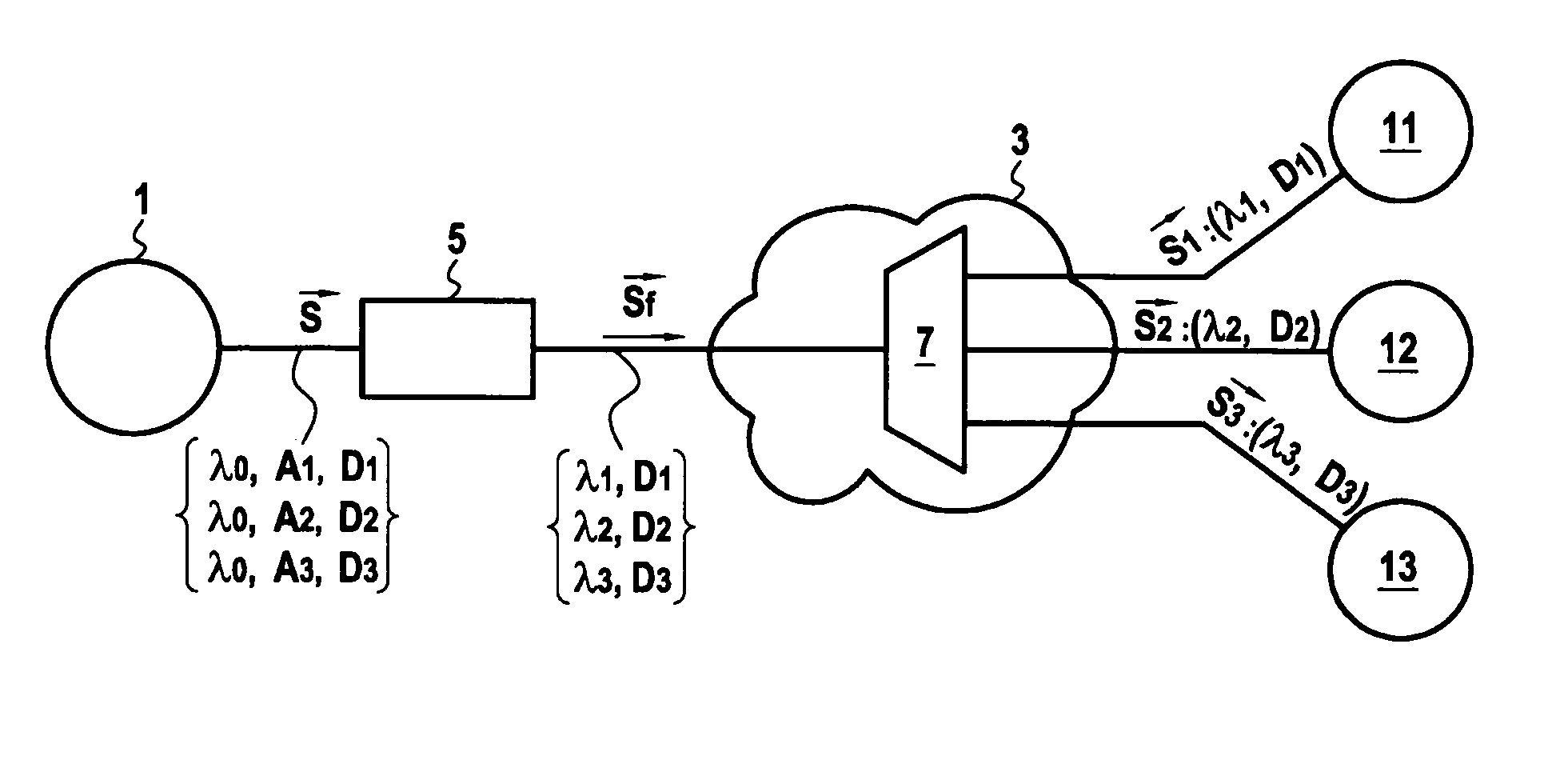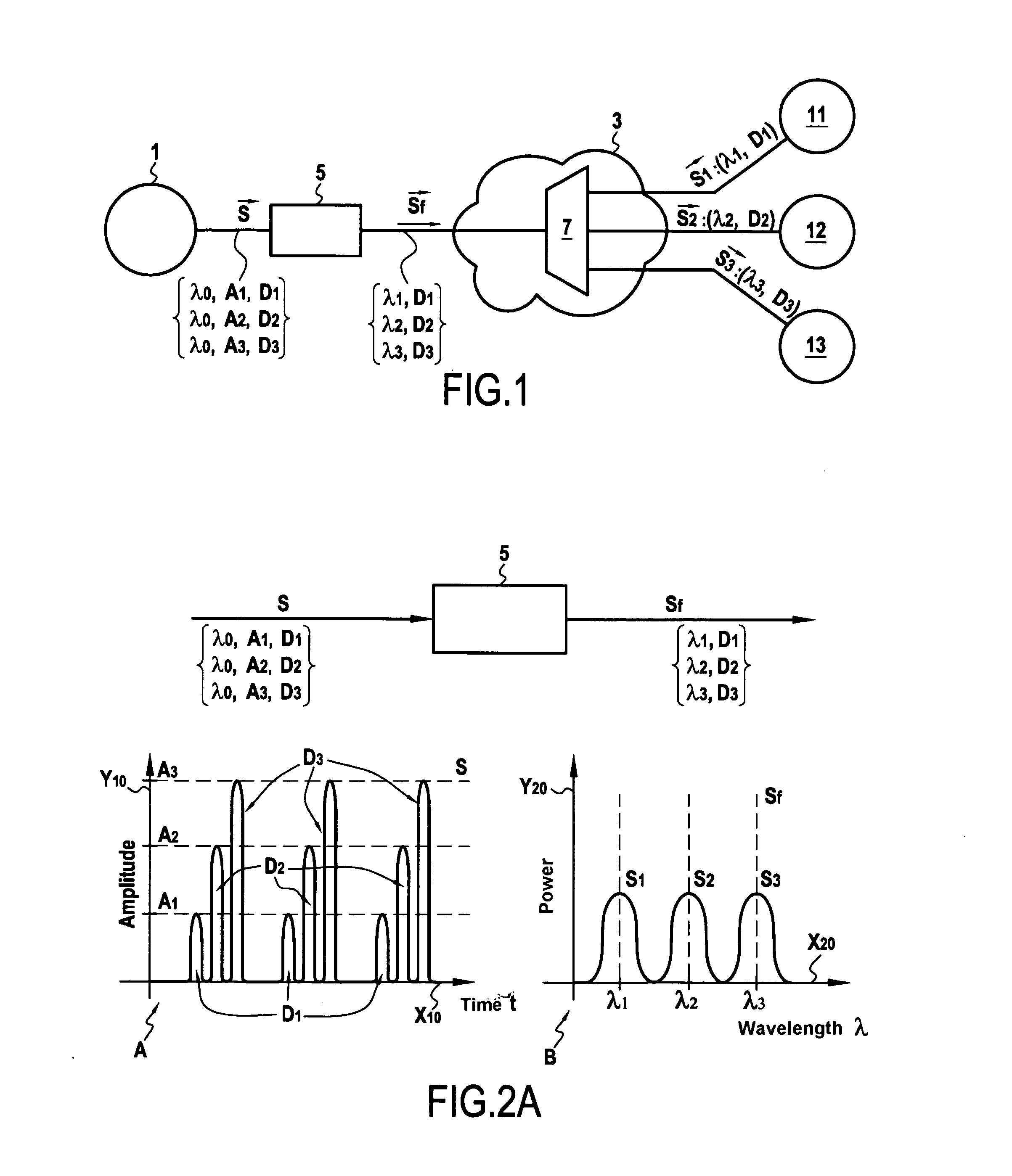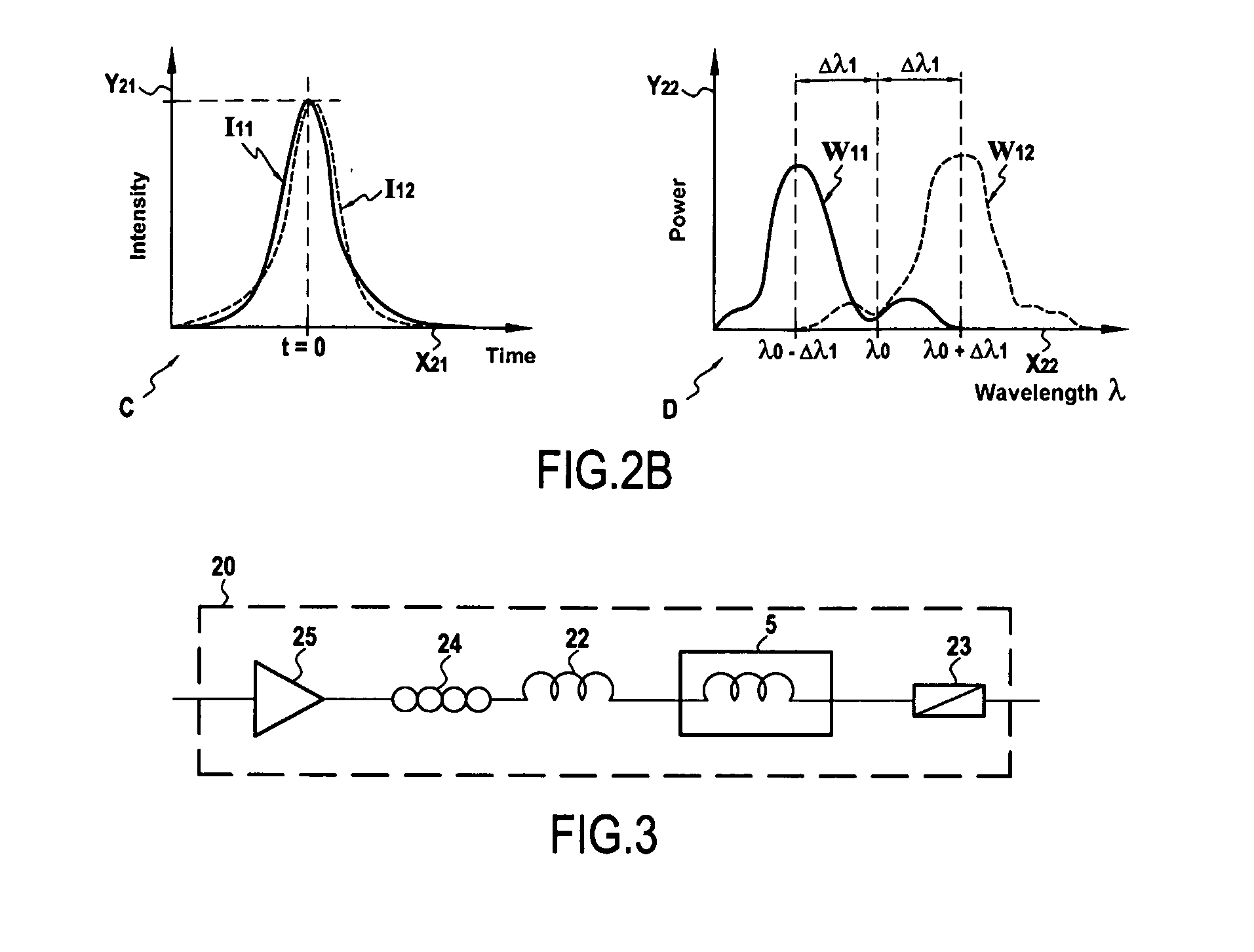Optical Transmission Between a Central Terminal and a Plurality of Client Terminals via an Optical Network
- Summary
- Abstract
- Description
- Claims
- Application Information
AI Technical Summary
Benefits of technology
Problems solved by technology
Method used
Image
Examples
first embodiment
[0169]FIG. 4 shows a first embodiment of a bidirectional optical transmission system comprising an uplink and a downlink using the uplink and downlink transmission stages described above and in which the central terminal 100 comprises a receive demultiplexer 33 (second demultiplexing means), two data receivers 37 and 35 connected to the receive demultiplexer 33, and the circulator 31, which is disposed between the converter 20 and the receive demultiplexer 33.
[0170]During a demultiplexing step of the uplink transmission stage, the wavelength division multiplexed uplink optical signal S′f is spectrally demultiplexed by the receive demultiplexer 33 to distribute the spectral components S′1, S′2 to first and second data receivers 35, 37, respectively.
[0171]During a reception step, the first data receiver 35 and the second data receiver 37 receive the uplink data D′1 and the uplink data D′2, respectively, carried by the uplink optical signals S′1 and S′2, respectively, on respective wav...
second embodiment
[0175]In the second embodiment shown in FIG. 5, the central terminal 101 comprises:[0176]the transmitter 30, the optical circulator 31;[0177]a first optical converter 20 of the invention, between the transmitter 30 and the optical circulator 31;[0178]a data receiver 39 connected to the second converter 21; and[0179]a second optical converter 21 of the invention, between the data receiver 39 and the optical circulator 31.
[0180]After it has been routed by the optical circulator 31, the wavelength division multiplexed uplink optical signal S′f is injected into the second optical converter 21, which in a step of conversion by the non-linear soliton trapping effect converts it into a time division multiplexed uplink signal on a single wavelength λ′0 carrying the uplink data D′1, D′2.
[0181]As in the downlink transmission stage, the non-linear optical means of the second converter 21 consist of a polarization-maintaining birefringent fiber 5. The conversion step of the uplink transmission ...
PUM
 Login to View More
Login to View More Abstract
Description
Claims
Application Information
 Login to View More
Login to View More - R&D
- Intellectual Property
- Life Sciences
- Materials
- Tech Scout
- Unparalleled Data Quality
- Higher Quality Content
- 60% Fewer Hallucinations
Browse by: Latest US Patents, China's latest patents, Technical Efficacy Thesaurus, Application Domain, Technology Topic, Popular Technical Reports.
© 2025 PatSnap. All rights reserved.Legal|Privacy policy|Modern Slavery Act Transparency Statement|Sitemap|About US| Contact US: help@patsnap.com



